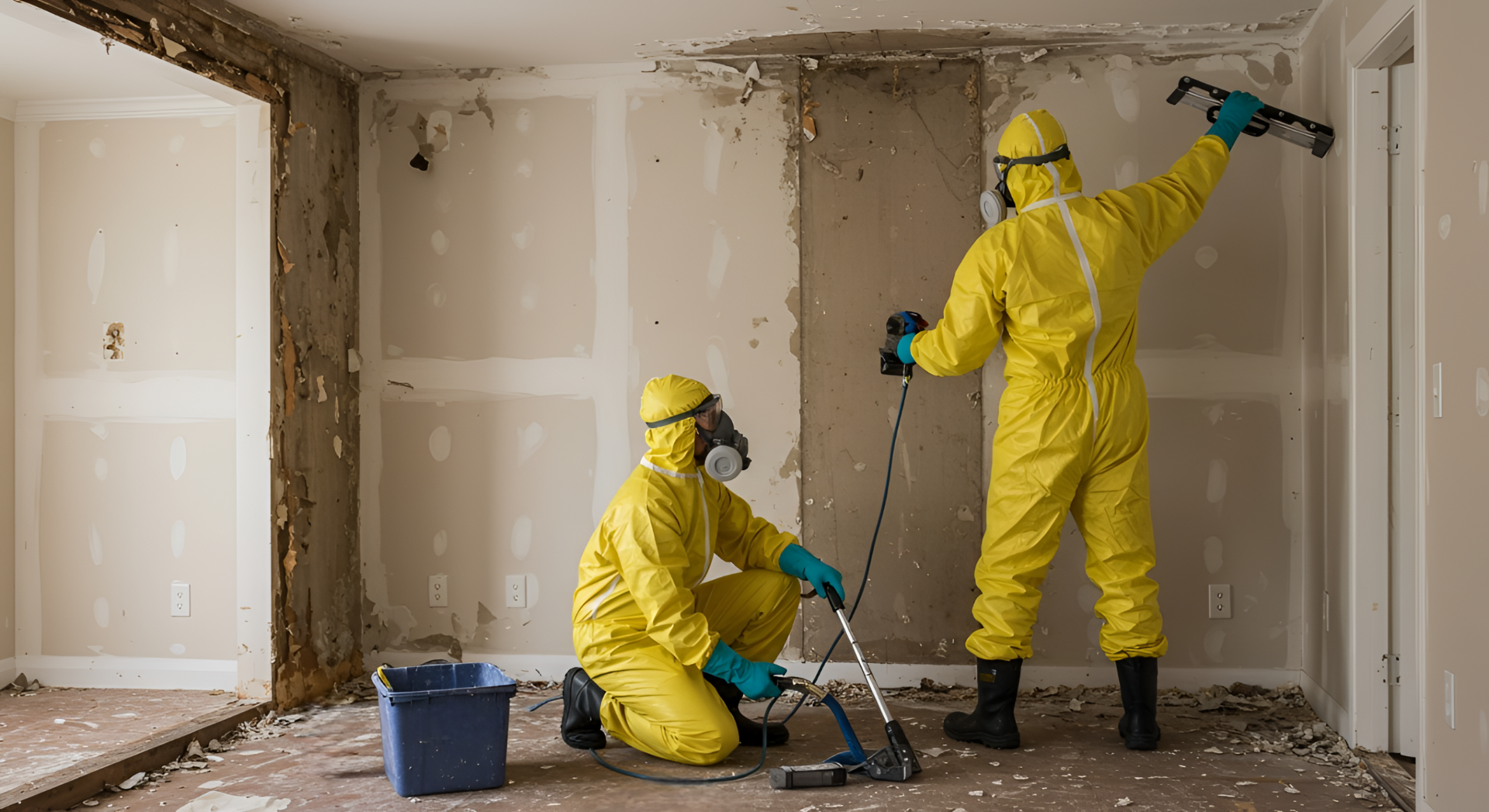When disaster hits or damage sets in, most property owners ask the same thing: What exactly happens next? At Prestige NW Restoration, we’ve heard the uncertainty in those first calls. We understand how crucial it is to know what you’re walking into what steps are involved, how long they take, and who you can trust to do the job right the first time. That’s why we’re breaking it down clearly, from our own hands-on experience across Southwest Washington.
This guide lays out the actual steps involved in professional restoration services—the same steps we follow when we arrive on-site. Whether it’s from fire, water, mold, or storm damage, you’ll walk away with a full understanding of the process, your role, and what to expect when you choose Prestige NW Restoration.
Step One: Emergency Response and Assessment Where it Starts
Time matters. Damage spreads fast. That’s why we begin with immediate dispatch and a rapid, boots-on-the-ground response. When you call us at (360) 334-3624, we’re already preparing for an on-site inspection.
Once there, our crew conducts a full walkthrough, identifying the type and extent of the damage. This isn’t just about pointing out what’s wrong it’s about setting the stage for what comes next.
Detailed Inspection Using Professional Tools
We use infrared imaging, moisture meters, and structural diagnostics to detect hidden issues. In water-related jobs, for example, spotting moisture behind drywall can prevent mold and decay that would otherwise go unnoticed.
Why Fast Assessment Reduces Long-Term Cost
When damage is assessed quickly and thoroughly, we’re able to stop it from spreading saving drywall, flooring, and structural components that would be lost if left untreated. Our team acts fast and with precision to minimize demolition and restoration costs down the line.
Step Two: Containment, Stabilization, and Safety Controls
Next, we lock down the site—physically and environmentally. Safety comes first, and so does preventing secondary damage.
Moisture and Mold Containment
For water and mold-related jobs, we use vapor barriers and negative air machines to isolate affected areas. This protects the rest of the home and keeps indoor air quality under control.
Electrical, Structural, and Fire Safety Protocols
If fire or storm damage compromised the structure, we brace, tarp, and secure. For electrical hazards, we coordinate immediate shutdowns and professional evaluation. Our team has handled everything from wind-damaged roofs to full-blown fire recoveries. Safety is never a guess.
Step Three: Mitigation and Material Removal
This is the dirty work and it’s essential. We remove compromised materials, stop active leaks, extract standing water, and clean debris. Every decision we make here directly affects how well the rebuild phase will go.
Non-Salvageable vs. Salvageable Materials
We sort damaged components into what can be cleaned and saved versus what must go. For instance, in a water damage scenario, non-porous surfaces may be salvaged after professional drying. Soaked drywall? It’s gone. We make those calls on the spot, with full transparency.
Dehumidification and Structural Drying
Our commercial-grade air movers and dehumidifiers stay in place until the structure is dry to industry standards. This step prevents mold growth and warping crucial in keeping repair costs and timelines realistic.
Step Four: Cleaning, Sanitization, and Environmental Remediation
Once the damage is cleared, we go in with EPA-approved cleaning agents and specialized equipment. This is where health and safety get restored.
Mold Remediation Done to Code
We follow IICRC standards for removing mold colonies and contaminated materials. Our crew uses HEPA-filtered vacuums, containment protocols, and antimicrobial treatments to ensure the issue is handled not just masked.
Smoke, Soot, and Odor Removal
In fire restoration, smoke goes deeper than just surface stains. We use ozone treatments, thermal fogging, and media blasting to clean what’s underneath—framing, insulation, ductwork. It’s about true remediation, not surface fixes.
Step Five: Repairs, Rebuilds, and Final Restoration
With the site stabilized, cleaned, and dried, the focus shifts to making it whole again. Our rebuild teams step in to restore what was lost walls, flooring, cabinetry, roofing, paint. We match materials and finishes as closely as possible to pre-loss conditions.
Interior and Structural Restoration Services
From drywall and paint to flooring, framing, and roofing our crews handle it all. We’ve rebuilt kitchens, bathrooms, garages, and basements after fire and flood damage across Clark County.
Seamless Hand-Offs Between Crews
You don’t juggle contractors. We keep all communication under one roof. Our project managers coordinate each phase, ensuring smooth transitions from mitigation to rebuild, with clear updates throughout.
Step Six: Documentation, Insurance, and Customer Sign-Off
Every job is documentedfrom start to finish. Photos, moisture readings, safety logs, and restoration checklists are organized and accessible for you and your insurance provider.
Insurance Liaison Support
We work directly with your adjuster to explain the scope of work, justify costs, and provide all required documentation. This saves you time and prevents delays in claim approval.
Final Walkthrough and Satisfaction Check
Before we pack up, we walk through everything with you. We don’t leave until you’ve seen the work, asked every question, and signed off with full confidence. Our job’s not done until you’re satisfied.
Ready to Take the Next Step with Prestige NW Restoration?
Every step in a restoration project matters. From the first call to the final coat of paint, the difference lies in doing it right with speed, clarity, and craftsmanship. At Prestige NW Restoration, we bring all three to every job. We serve homeowners and property managers throughout Southwest Washington with 24/7 availability and end-to-end restoration expertise.
If you’re dealing with damage or want to be ready if it happens reach out today. Call us at (360) 334-3624 or email [email protected]. We’ll walk you through it, handle the hard parts, and restore what matters most.
Have More Questions? We’ve Got Answers
How fast can your team respond to a restoration emergency?
We’re on call 24/7. Once we get your call, our goal is to be on-site within hours—day or night.
Do I need to contact my insurance before calling you?
No. You can call us first. We’ll stabilize the situation and help you file the claim correctly.
What kind of damage do you handle?
Water, mold, fire, smoke, storm, structural—we’ve handled them all. Each one starts with a full assessment.
Will you work with my insurance company?
Yes. We handle all the documentation and communication with your adjuster to move the claim forward.
Can you handle both cleanup and rebuilding?
Absolutely. We’re a full-service restoration contractor, so you don’t have to coordinate between separate companies.
How long does the full restoration process take?
It depends on the damage, but small water jobs may wrap in days. Larger fires or structural rebuilds can take weeks.
Do you offer mold testing?
Yes. We provide both in-house mold inspections and lab-based testing when required for clearance.
What certifications do your technicians carry?
Our team is trained and certified through IICRC and OSHA, with extensive field experience on top.
Can I stay in my home during the restoration?
That depends on the extent of damage and potential health risks. We’ll help you make the right call.
Is there any upfront cost?
We bill most emergency services through insurance. If it’s out-of-pocket, we provide clear estimates before starting.



